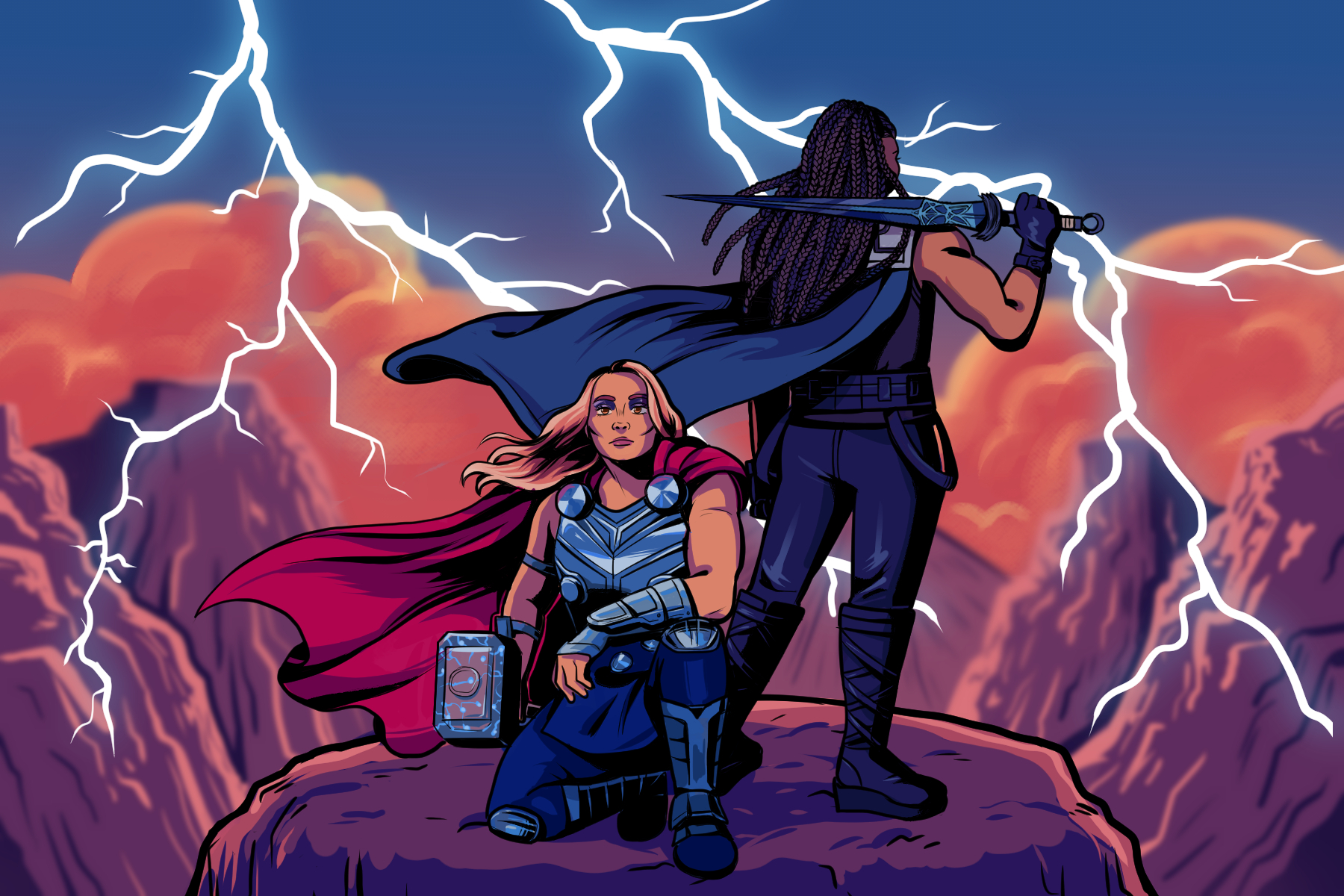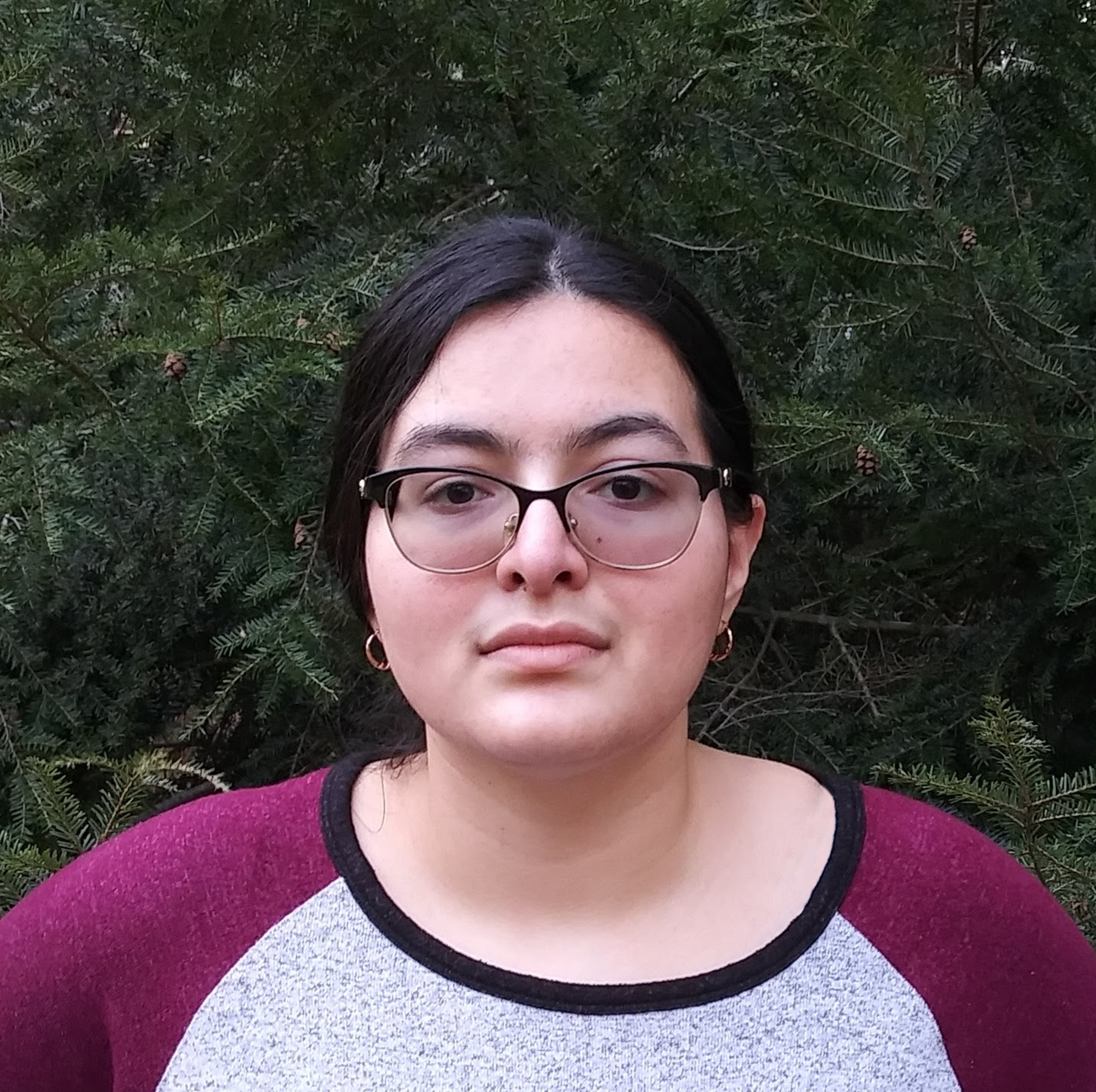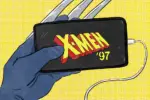Spoilers for “Thor: Love and Thunder” ahead.
Sometimes I wonder if the MCU stands for Male Cinematic Universe. It sure seemed like it, at least in the early days. Back then, the first female superhero in the MCU, Black Widow (Scarlett Johansson), was “a very expensive sexual harassment lawsuit” waiting to happen when she made her debut in “Iron Man 2” (2010). Fast forward to 2017, and “Thor: Ragnarok” brought to the big screen the MCU’s first major female villain, one as worthy of the honor as Thor is of his hammer — at least until she shattered her chance. Hela (Cate Blanchett) was everything she had to be — powerful, glamorous, compelling — as she took over Asgard, necessitating the destruction of the entire planet to kill her. Five years later, expectations were high for “Thor: Love and Thunder” (2022), directed once again by Waititi.
Could his second MCU movie possibly live up to the hype, and could it possibly do justice to its female characters?
The short answer is, not really.
In the same film that transformed the Thor movies from drab, desaturated Norse Shakespeare into colorful chaos, director Taika Waititi introduced not just Hela but also the complex Valkyrie (Tessa Thompson), a rich Asgardian backstory, the seemingly unavoidable tales of loss and trauma, and many roles from hero to hunter. Given the good few years Taika Waititi has had from “Thor: Ragnarok” and beyond, “Thor: Love and Thunder” seems kind of underwhelming.
It’s not a bad movie by any means, but it’s no “Ragnarok,” and it doesn’t reach the brilliance of Waititi’s hit series like “What We Do in the Shadows” and this year’s “Our Flag Means Death.” Waititi juggles multiple plot lines while keeping the run time admirably short — breaking up the (As)Guardians of the Galaxy, sending the intergalactic crew on their way and gifting some hilarious screaming goats to Thor.
He takes a detour to retrieve Lady Sif (Jaimie Alexander), a much-welcome familiar face who is mostly wasted in “Thor: Love and Thunder” except to advance the plot. Gorr the God Butcher’s (Christian Bale) introduction, as well as his scenes with the children, are wonderfully dark and chilling, contrasting with the otherwise rainbow tones of the movie. With better pacing, the movie could have taken time to flesh out scenes and semi-wasted set pieces like the Omnipotent City, rather than letting its longer dialogue drag. Still, that doesn’t detract much from the fun of the film.
Part of the hype for “Thor: Love and Thunder” wears a red cape, flexes buff biceps and shows off blonde hair. No, I’m not talking about Thor — at least not the old Thor. Rather, this is the Mighty Thor, better known as Dr. Jane Foster (Natalie Portman). I had high hopes that Portman’s return would be triumphant, and in many ways, it was. Her fight scenes finally allow her to shine in the MCU, as she channels lightning and wields the new, improved Mjolnir. Yes, she’s worthy of the hammer — but we learn it’s partly because Thor asked it to take care of her.
Despite that little detail, I enjoyed the fact that the hammer reassembled itself for Jane, not Thor Odinson (Chris Hemsworth), after Hela destroyed it. In Jane’s hands, Mjolnir even gets an upgrade: It can now launch its broken chunks like targeted missiles and reassemble them all into one. I’m not a fan of her eager emphasis on finding a catchphrase throughout the movie, which seems designed to remind us that she’s still new at this and not as good as Thor Odinson, despite being more than capable in battle. It’s not as humanizing as the moment she tears a page out of her own book to explain wormhole theory to a fellow patient while receiving chemotherapy. However, it pays off poignantly at the end of the movie, both when she yells “Eat my hammer” at Gorr after he calls her “Lady Thor” and when she whispers a new idea for a catchphrase in Thor’s ear while dying.
As someone who never really read comics as a kid, I don’t understand the whole deal with adapting plotlines faithfully from their source material. Comics are more fluid than books and allow many realities to exist at once. Maybe that’s why I have such a problem with Jane’s storyline in this movie. Of all the options, why did Waititi and the writers choose the one where wielding Mjolnir as a hero weakens her ability to fight cancer and kills her?
Sure, she ends up in Valhalla (the highest honor for Viking warriors, and a status that allows Portman to choose whether she wants to return to the MCU). And sure, they build a statue in her honor. But it would be better if she had been able to both fight and live. I may have even accepted the two events being mutually exclusive — yes, she dies of stage IV cancer, which she and Erik Selvig (Stellan Skarsgård) had confirmed was worsening despite treatment, or yes, she dies in battle saving the universe from Gorr, but her heroics don’t fatally weaken her mortal woman’s body.
Some of my favorite scenes in the movie were not about Jane’s relationship with Thor, which is supposed to be the central bond in the movie, but her interactions with other women — briefly Darcy (Kat Dennings), but mostly Valkyrie. When Jane looks in the mirror over the sink and understands that the hammer isn’t healing her, that she’s still dying, she smashes the sink. Outside the door, Valkyrie understands and agrees to keep it between the two of them. In Omnipotent City, Zeus (Russell Crowe with his Greek accent) flicks too hard and leaves Thor naked in the middle of the arena with his tattoo of Loki’s helmet exposed on his back. Ignoring the embarrassing moment, Jane leans over to talk to Valkyrie while the latter reaches for a snack. In addition to looking like they’re having a girls’ day out, they plot how to rescue Thor while he continues to make things worse for himself.
Still the jaded warrior from the last movie, Valkyrie steals the spotlight in every scene until the movie sidelines her. In one scene, she walks directly behind the two Thors, next to the goats. Earlier in the movie, we see her excelling as King Valkyrie through “meetings, raven mail, and meetings that could have been raven mail” — as well as commercials for Old Spice and everything that comes with the tourist trap New Asgard has become. She calls a meeting after Gorr steals the town’s children, and no matter how good her ideas are or how inspiring her speech sounds, everyone speaks over her. They only go quiet when Thor yells for silence and launches into his own inspirational speech. Nobody so much as breathes too loudly when he talks.
With both a laid-back attitude and residual trauma from losing her girlfriend (yes, canonically her girlfriend, which is probably why the movie is banned in China), Valkyrie does whatever she wants. She doesn’t get a new girlfriend — she admits in a heart-to-heart with the gay rock creature Korg (Taika Waititi) that she’s not quite ready yet, despite making progress since drinking away her woes in the previous “Thor” movie. But while “Thor: Love and Thunder” doesn’t have a same-sex relationship, it’s still the queerest movie in the MCU: It has King, not Queen, Valkyrie.
In one scene, King Valkyrie wears a suit. In another, she sports a Phantom of the Opera T-shirt. She jokes with Thor that they’re both on “Team Jane,” making him wonder whether she’s friend or rival when it comes to his love of Dr. Foster. When Heimdall’s son Axl (Kieron L. Dyer) — who chose his own name, giving him a potential queer subtext — projects Thor into the cage where Gorr has trapped the children, Valkyrie tickles under his nose with her hair, something he can’t defend against. In the Omnipotent City, she single-handedly procures disguises for the group and waves away concerns about her off-screen dispatching of the Emotion Gods to whom they’d belonged. Before long, she’s taking out enemies left and right, basking in the golden spray of blood and kissing a woman’s hand before escaping. It’s enough to make even straight women swoon.
Wielding Zeus’ lightning bolt, Valkyrie charges into battle in the Shadow Realm alongside Jane and Thor. Even though all the color drains out of the frame, the lightning bolt in her hand remains yellow, centering her, not the two Thors who seem like the logical focus. And yet, she becomes injured in this battle and thus must sit out the final confrontation. While this ostensibly refocuses the action and heart of the movie around Jane and Thor’s relationship, it still cuts the great warrior (for that is a Valkyrie’s role) out from the pivotal battle and Gorr’s victory/defeat.
There’s one more woman to whom the movie belongs, even though she barely appears in it. The ghost of Gorr the God Butcher’s young daughter (India Rose Hemsworth) lingers in each scene. It’s terrible the way she was essentially relegated to the fringes before the Marvel Logo rolled across the screen. Her only defining characteristic for much of the movie is that she was Gorr’s daughter who died. She seemingly doesn’t even have a name, besides the title of “Love” at the very end.
When his god laughed at Gorr’s suffering and blind devotion, his anger as a grieving father attracted the Necrosword to him, sending him on a quest to kill all gods. When he eventually succeeds in finding Eternity to grant him a wish, it is his love for his daughter that makes his dying act to bring her back, rather than to destroy all gods. Only then do we get to see her personality, as Thor adopts her and they end the movie by going into battle together as Love and Thunder.
While Gorr’s daughter gets a new life and a happy ending (she even gets Thor’s hammer, Stormbreaker), Jane still ends up in Valhalla. It leaves me wondering: Why do so many female heroes’ triumphant power have to come with suffering, often the kind that destroys them? Captain America recovers from being a Cap-sicle. The Winter Soldier gets his redemption arc. Our trusty Doctor Strange finds magic, not madness, after losing the use of his hands for surgery, even briefly becoming the Sorcerer Supreme. And while Iron Man has his whole troubled “genius, billionaire, playboy, philanthropist” thing going on and dies to save the universe, this arc transpires over a decade and three phases of the MCU.
For women, it’s often a different story. Take, for example, Wanda Maximoff (Elizabeth Olsen), the Scarlet Witch. Her entire backstory bleeds grief: Losing her parents, being experimented on, losing her brother, and then watching her love, Vision (Paul Bettany), die twice. She finds some redemption after her trauma-fueled “psychically enslaving a town so she can play a happy sitcom housewife” phase in “WandaVision,” only to have it undone in “Doctor Strange and the Multiverse of Madness.” (For a recap, you can look here.) Her downfall, ending in self-sacrifice, takes its unfortunate inspiration from the comics. (Why must we be bound to the comics written by sexist men?) I doubt her demise is more permanent than any other MCU death, Natasha excluded, but it still isn’t a good look.
Speaking of Natasha Romanoff, her time as a young assassin haunts the former Russian operative as she writes of the “red in her ledger.” In “Avengers: Age of Ultron,” directed by Joss Whedon, unfortunately, she laments her inability to have children, calling herself a monster. For a rebuke, I must look at Yelena Belova’s (Florence Pugh) comment in “Black Widow” (2021) about how she doesn’t get periods because her uterus was ripped out of her. Like I said, female heroes have trauma. Before that movie, in 2019, Natasha also throws herself off a cliff to allow her friend, Clint Barton, a married man with kids, to live. This was the same year that Captain Marvel (Brie Larson) became the first female superhero to headline her own movie in the MCU. Make of that what you will.
To find female heroes with less trauma, I had to look at the new generation. In the Disney+ realm of the MCU, six-hour shows grant rising stars like Kate Bishop in “Hawkeye” and Kamala Khan in “Ms. Marvel” a license to be joyful. Especially in the latter, there’s family, friendship and community, the kind that should be present more in women’s stories (and all stories, to be honest). There is adventure and there may be pain, but it doesn’t cruelly undermine their characters. It contributes to them, and they flourish, rather than being destroyed by it.
While more respectful and complex than the recent storylines of Wanda and Natasha, the treatment Valkyrie and Dr. Jane Foster received in “Thor: Love and Thunder” didn’t always meet the standards set by newer heroes like Kate Bishop and Kamala Khan. There was plenty of joy and playfulness crammed into the movie’s runtime, just as there was plenty of heartbreak for Thor and both women. As we receive more stories shining a brilliant spotlight on women’s stories, I can only hope we will receive complex, diverse representation, even if it isn’t perfect. Soon, the few flawed narratives we currently have won’t represent all of what the MCU, and movies as a whole, can offer.

















